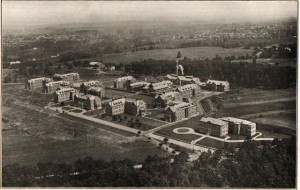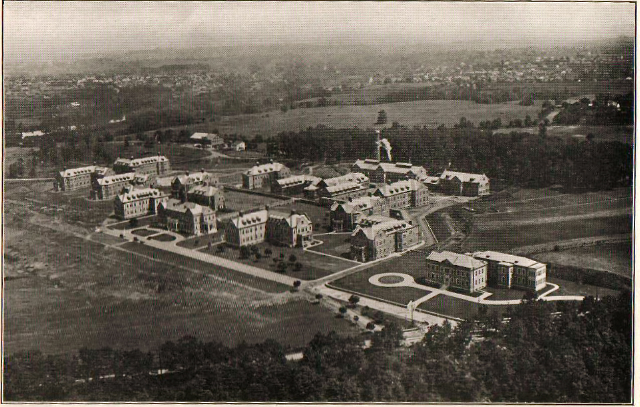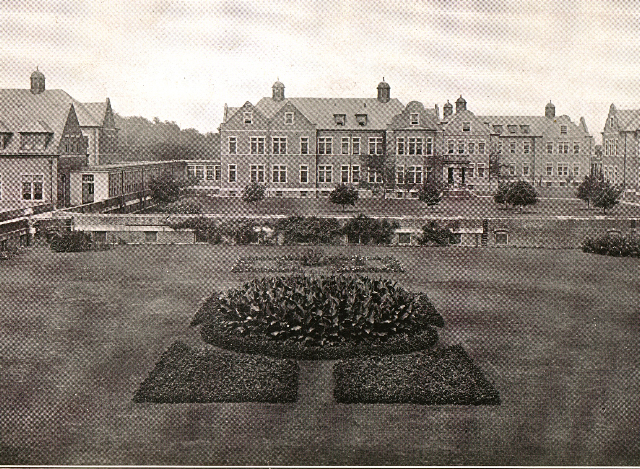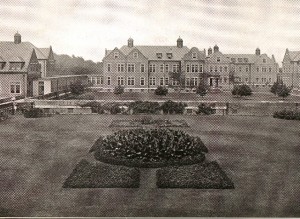Pennhurst State School and Hospital
Essay
During eight decades of continuous operation (1908-87), Pennhurst evolved from a model facility into the subject of tremendous public scandal and controversy before the federal courts ordered it closed and the remaining residents moved elsewhere. Twenty years after its closure, the Pennhurst campus was recognized as an International Site of Conscience and its history became associated with a national and international disability civil rights movement. The Pennhurst story serves as a reminder of Philadelphia and Pennsylvania’s critical role in one of the great freedom struggles in contemporary history.
Opened in 1908 as the Eastern Pennsylvania Institution for the Feeble Minded and Epileptic, but better known by its popular name, Pennhurst was part of a national trend to segregate individuals with intellectual and developmental disabilities (then referred to as “defective”, “degenerate” and “unfit”) from mainstream society. Fearful that existing institutions at Elwyn (outside Philadelphia) and Polk (in Venango County) would be overwhelmed by what they saw as a rising tide of hereditary “feeble-mindedness,” Philadelphia public health officials like Martin Barr (1860-1938), Joseph Neff (1854-1930), and George Stanley Woodward (1863-1952) joined other medical professionals in persuading the state legislature to provide relief through perpetual quarantine. Over eight decades more than 10,500 individuals resided at the 1400-acre facility outside of Spring City in rural Chester County; at its peak more than 3,500 people were in custodial care at Pennhurst.

Patient Advocacy Movement
By the late 1940s a growing public movement spearheaded by family members and new groups like the Association of Retarded Citizens (ARC) challenged administrative practices at Pennhurst and other such institutions. This advocacy movement was encouraged by a series of startling media exposes, none more compelling than Philadelphia newsman Bill Baldini’s 1968 five-part television report entitled “Suffer the Little Children.” Film footage of half-clothed children wandering aimlessly on the ward, the sights and sounds of everyday institutional life, and Baldini’s own sparse narrative revealed a hidden world of neglect. So disturbing were conditions in institutions like Pennhurst that in 1985 U.S. Supreme Court Justice Thurgood Marshall denounced the “regime of state-mandated segregation and degradation . . . that in its virulence and bigotry rivaled, indeed paralleled, the worst features of Jim Crow.” Residents themselves, now called self-advocates, soon joined the campaign for more humane treatment and equal protection under the law.
Pennhurst figured prominently in several civil rights lawsuits filed in the 1970s, including the groundbreaking Halderman v. Pennhurst State School and Hospital, which was settled in 1984 and led to the institution’s closure three years later. Halderman v. Pennhurst opened the way for greater educational opportunities and community-based living arrangements for people with developmental disabilities. In 2010 the Commonwealth of Pennsylvania (joined by the Pennhurst Memorial and Preservation Alliance and the Public Interest Law Center of Philadelphia) dedicated a historical marker to Pennhurst’s enduring legacy in Pennsylvania and American history.
Dennis Downey is Professor of History and Director of the University Honors College at Millersville University. He is at work on a new book, A World Apart: The Story of the Pennhurst State School and Hospital.
Copyright 2013, Rutgers University.
Gallery
Backgrounders
Connecting Headlines with History


